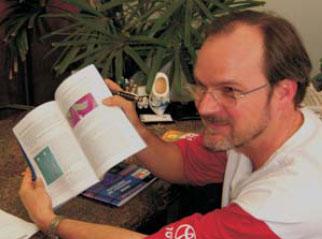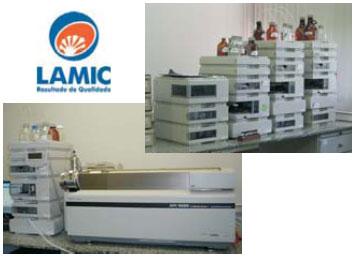Brazil: Taking Action on the Mycotoxin Problem
Published: March 28, 2008
Source : Engormix.com
Brazil is one the largest grain producers and exporters of poultry and swine meats in the world. For many years grain growers were very fortunate because the only mycotoxin problem they had was aflatoxin. In the last 4 years this picture has dramatically changed.
Fumonisin, Zearalenone and Vomitoxin started to be detected at high concentrations in corn, wheat and soya affecting animal production.
A sudden influx of mycotoxin binders began to appear offering all kinds of solutions based more on marketing than on accurate results. The Brazilian Government facing the mycotoxin problem and this abundance of products, decided to take drastic action to provide real solutions to this major problem.
Unlike the USA, where mycotoxin binder approval does not exist because carcinogens such as some mycotoxins are not allowed in feed, and the European Union where mycotoxins are controlled by regulations only allowing very low levels in the feed, Brazilians are approaching the situation in a very efficient and practical way. They recognized they have a mycotoxin problem; therefore they formed a committee of scientists and experts in the field of mycotoxins to create and develop the methodology and regulation for the approval of antimycotoxin additives (adsorbents / detoxifiers).
The conclusion of the committee was to implement a program consisting of a three stage process for the approval of anti-mycotoxin additives, conducted in a Brazilian university recognized for being a leader in the mycotoxin field. The university assigned for this project was Universidade Federal de Santa Maria, Departamento de Medicina Veterinaria Preventiva, Laboratorio de An�lises Micotoxicol�gicas � LAMIC, under the direction of Dr. Carlos Mallmann.

LAMIC was founded 15 years ago and it is now one of the top five independent mycotoxins laboratories in the world. This laboratory has nine HPLC equipments and a mass spectrometer dedicated exclusively to mycotoxins analyses. It also has its own swine and poultry research center for in vivo studies. LAMIC is economically self-sufficient and its main function is to provide services to the farmers, not the manufacturers of mycotoxin binders.

In vitro study
The process of approval starts with an in vitro study done at different pH using several levels of the mycotoxin binder and - depending on the mycotoxin tested - the mycotoxin level can vary from 1,000 ppb to 2,500 ppb. If the product has an acceptable performance of better than 80% efficacy, then it can enter into the second phase.
In vivo study
The second phase is an in vivo study that must be performed with only one mycotoxin at a time from 1,000 ppb to 50,000 ppb, depending on the mycotoxin, and tested on a specific type of animal at a time.
Target organ
The key part in this study is that the anti-mycotoxin additive must show a statistically significant beneficial effect on the target organ. For Aflatoxin is liver; for Fumonisin is lungs; for Zearalenone is reproductive organs; for T-2 toxin oral lesion, and so on. Therefore, this approval is not based just on the improvement of the immune system or recovering an enzyme affected by the mycotoxin; but the product must prove to have a direct beneficial effect on the target organ. In addition, on Aflatoxins and Fumonisins trials, the anti-mycotoxin additives must show statistically significant benefits on body weight and feed intake, leaving no doubt that the product is working.
The third phase consist on retesting the mycotoxin binder in vitro every 6 months and in vivo every 2 years to reassure that the manufacturers are selling the same product than originally approved.
Few products approved
This program was implemented about a year ago and only few products have been approved; all are clay based products: 15 for the prevention of aflatoxin toxicity, 3 for zearalenone and only 1 for Fumonisin.
Myths are broken
Through this approval process, two myths have been broken, confirming other recent results published in Poultry Science andAnimal Science meetings in the USA and presented in the World Mycotoxin Forum 2006:
1) Clays only work against aflatoxin.
2) All clays (HSCAS) are equal.
There are a few clays that are very effective against several mycotoxins including Zearalenone and Fumonisin as proven by LAMIC.
The Brazilian producers should be very proud of LAMIC for its professional work and grateful for the government's action of preventing the sale of anti-mycotoxin additives based on marketing instead of serious scientific evaluation. For the rest of producers in the world, where governments have not taken a scientific approach to approve mycotoxin binders, they can have now some protection from frivolous marketing by requesting if the product offered has been tested and approved by LAMIC.
By Dr. Alberto Gimeno
Technical Consultant in Animal Nutrition and Food/Feed Mycotoxicology
Source
Engormix.comRelated topics:
Mentioned in this news release:
Alberto Gimeno
Recommend
Comment
Share

Would you like to discuss another topic? Create a new post to engage with experts in the community.






.jpg&w=3840&q=75)